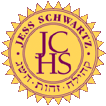 JESS
SCHWARTZ JEWISH COMMUNITY
JESS
SCHWARTZ JEWISH COMMUNITY
HIGH SCHOOL
 JESS
SCHWARTZ JEWISH COMMUNITY
JESS
SCHWARTZ JEWISH COMMUNITY
 CHEMISTRY
WEB SITE
CHEMISTRY
WEB SITE
RULE #1 - All digits 1 through 9 are significant
If the mass
of an object is measured as 15.8 g, this means that the mass is known to
lie between 15.7 and 15.9g. There are 3 significant figures in 15.8.
THE INSTRUMENT USED TO MAKE THIS MASS MEASUREMENT CAN ONLY DETECT
DIFFERENCES OF 0.1G OR 100 MG.
If the mass
of an object is measured as 12.3456 g, this means that the mass is
known to lie between 12.3455 and 12.3457 g. There are 6 significant figures
in 12.3456. THE INSTRUMENT USED TO MAKE THIS MASS MEASUREMENT CAN ONLY
DETECT DIFFERENCES OF 0.1 MG OR 100 MICROGRAMS.
Overall, you are counting all of the "certain" digits and a final digit
that is uncertain, but nevertheless significant.
2. Which of the following has the smallest number of significant figures?0.00030, 123, 0.4005, 2.04, 2.004, 123 and 2.04 each has 3 significant figures but 0.00030 is the same as 3.0 x 10-4, so it has only 2 significant figures.
3. How many significant figures are in the number 20.010?
Once again, four digits are known with certainty and there are five
significant figures.
4.How many significant figures are in the number 0.01000?
This is tricky and requires some thought. As an exponential number
it can be represented as 1.000 x 10-2 and then the presence
of FOUR significant figures becomes evident.
5.How many of the following numbers have 4 significant figures? 3.0156,
18.00, 0.007000, 3.45 x 104 and 0.0021
Some of you may say its length is 6.75 cm. Some may say it is 6.74 cm
or 6.76 cm. We are quite
certain that the length is somewhere between 6.7 cm and 6.8 cm. The
third (last) digit is a reasonable
guess. In other words, we can only estimate to the nearest hundredth
of a centimeter. There is an
uncertainty of at least 0.01cm.
It is unreasonable to report a value like 6.75342183
cm since we are not even sure about the third digit. The last six digits
are meaningless. Suppose we take the value 6.75 cm. In this reported measurement,
the first two digits are definitely significant. The third digit is also
significant but has some uncertainty associate with it. It is our best
estimate of where it is between 6.7 and 6.8 cm. Therefore, there are three
significant figures in the measured quantity reported above.
Similarly, all measured quantities are generally reported in such a
way that the last digit is uncertain.
All digits known with certainty including the uncertain one in a
measurement are called significant figures.
Value
# of S. F.
2.456
4
1003.2
5
1.03000
6
0.0000402
3
230000
2 - 6
In the last example, it is not clear how many
significant figures there are. Suppose there are
three significant figures, the number represents 230,000±1,000.
If there are two significant figures,
the number represents 230,000±10,000. To overcome this ambiguity
as well as for ease of
manipulation, such numbers should always be written in exponential
(scientific) notation: 2.30 x 105
(3 significant figures). Very large and very small numbers are usually
expressed in exponential
notation:
0.00000001230 = 1.230 x 10-8 (four significant figures)
3000000000. = 3.0 x 109 (two significant figures)
N.B. Only those digits before the exponent are used to express the number
of significant figures. Do
not add the exponential term to the number of significant figures.